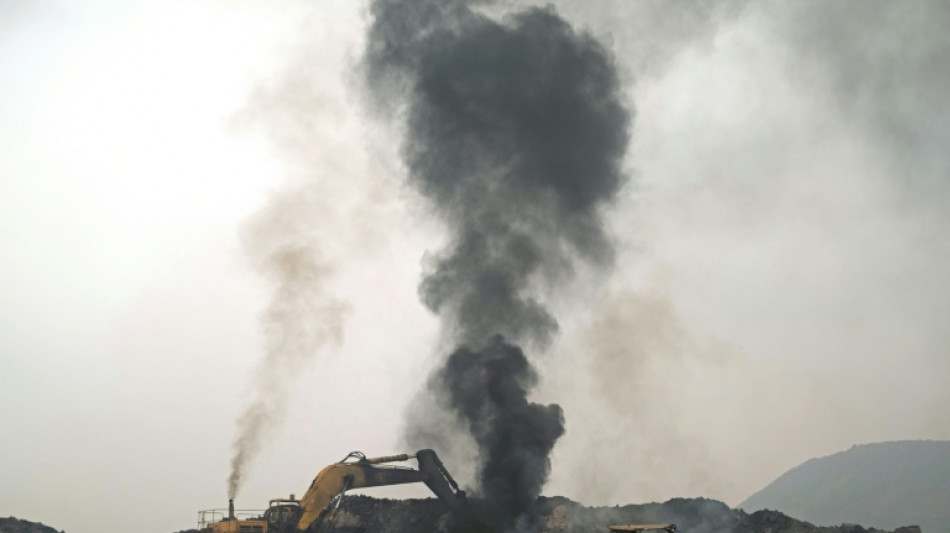
-
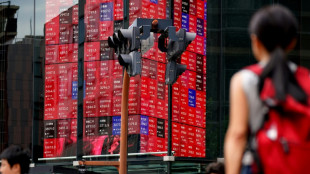 Asian markets waver as Japan exports show tariff strain
Asian markets waver as Japan exports show tariff strain
-
Israel defence minister approves plan to conquer Gaza City

-
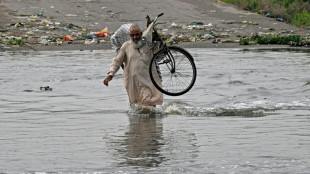 More than 20 dead in fresh Pakistan monsoon rains
More than 20 dead in fresh Pakistan monsoon rains
-
Brazilian goalkeeper Fabio claims world record for most games

-
 Vienna chosen to host Eurovision 2026
Vienna chosen to host Eurovision 2026
-
Japan hosts African leaders for development conference
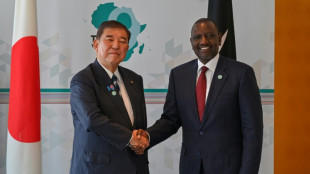
-
 Reclusive Turkmenistan bids to go tobacco-free in 2025
Reclusive Turkmenistan bids to go tobacco-free in 2025
-
From TikTok to frontrunner, inside Paz's presidential campaign in Bolivia

-
 Chinese mega-hit 'Ne Zha II' enlists Michelle Yeoh to woo US audiences
Chinese mega-hit 'Ne Zha II' enlists Michelle Yeoh to woo US audiences
-
India celebrates clean energy milestone but coal still king

-
 US demand for RVs fuels deforestation on Indonesia's Borneo: NGOs
US demand for RVs fuels deforestation on Indonesia's Borneo: NGOs
-
Kneecap rapper faces court on terror charge over Hezbollah flag

-
 Dutch divers still haul up debris six years after container spill
Dutch divers still haul up debris six years after container spill
-
Asian markets dip after US tech slide
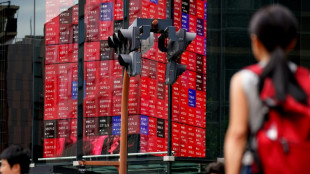
-
 NZ soldier sentenced to two years' detention for attempted espionage
NZ soldier sentenced to two years' detention for attempted espionage
-
Time to Go: Japan pro board game player retires at 98

-
 City girls snub traditional Hindu face tattoos in Pakistan
City girls snub traditional Hindu face tattoos in Pakistan
-
Australia lashes Netanyahu over 'weak' leader outburst
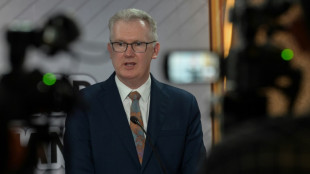
-
 Polar bear waltz: Fake Trump-Putin AI images shroud Ukraine peace effort
Polar bear waltz: Fake Trump-Putin AI images shroud Ukraine peace effort
-
Sounds serious: NYC noise pollution takes a toll

-
 Trump slams US museums for focus on 'how bad slavery was'
Trump slams US museums for focus on 'how bad slavery was'
-
US agrees to talks with Brazilian WTO delegates on tariffs

-
 Israel-France row flares over Macron's move to recognise Palestinian state
Israel-France row flares over Macron's move to recognise Palestinian state
-
Nano One Successfully Commissions Proprietary Agitator Equipment Boosting Throughput Capacity at Candiac Five New Patents Added to Global IP Portfolio

-
 BioNxt Fast-Tracks U.S. Patent for MS Drug and Secures Broad Platform IP Covering Autoimmune Neurology Pipeline
BioNxt Fast-Tracks U.S. Patent for MS Drug and Secures Broad Platform IP Covering Autoimmune Neurology Pipeline
-
Tocvan Strengthens Team Appoints Christopher Gordon As Head Of Corporate Development

-
 ANGLE Announces Collaboration with Myriad Genetics
ANGLE Announces Collaboration with Myriad Genetics
-
White House starts TikTok account as platform in US legal limbo

-
 Syrian, Israeli diplomats met in Paris to discuss 'de-escalation': report
Syrian, Israeli diplomats met in Paris to discuss 'de-escalation': report
-
Wanyonyi, the former cattle herder ready to eclipse Rudisha

-
 Swiatek, Ruud romp into US Open mixed doubles semis, Alcaraz, Djokovic out
Swiatek, Ruud romp into US Open mixed doubles semis, Alcaraz, Djokovic out
-
Mbappe lifts Real Madrid past Osasuna in La Liga opener

-
 Venezuela says 66 children 'kidnapped' by the United States
Venezuela says 66 children 'kidnapped' by the United States
-
Brazil nixes red World Cup jersey amid political outcry
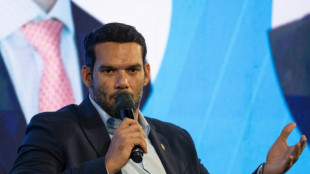
-
 Real Madrid scrape past Osasuna in La Liga opener
Real Madrid scrape past Osasuna in La Liga opener
-
McIlroy backs 'clean slate' season finale format change

-
 'Call of Duty', 'Black Myth' wow Gamescom trade show
'Call of Duty', 'Black Myth' wow Gamescom trade show
-
Isak says 'change' best for everyone after Newcastle trust broken

-
 Salah makes history with third PFA player of the year award
Salah makes history with third PFA player of the year award
-
Rabiot, Rowe put up for sale by Marseille after bust-up

-
 Weary Swiatek wins US Open mixed doubles opener
Weary Swiatek wins US Open mixed doubles opener
-
Miami fearing Messi blow ahead of Leagues Cup quarter-finals

-
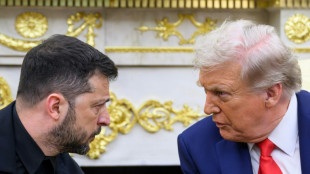 Trump rules out US troops but eyes air power in Ukraine deal
Trump rules out US troops but eyes air power in Ukraine deal
-
Trump course back on PGA schedule for 2026 season: tour

-
 Mexican boxer Chavez Jr. deported from US over alleged cartel ties
Mexican boxer Chavez Jr. deported from US over alleged cartel ties
-
Former Mali PM Choguel Kokalla Maiga charged with embezzlement, imprisoned
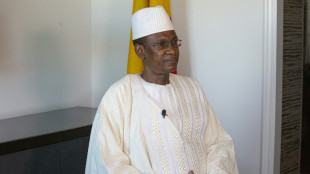
-
 Sinner withdraws from US Open mixed doubles draw
Sinner withdraws from US Open mixed doubles draw
-
Mexican drug lord Zambada to plead guilty in US court

-
 Russians welcome idea of Putin and Zelensky meeting
Russians welcome idea of Putin and Zelensky meeting
-
Spanish PM says 'difficult hours' left in wildfire fight


India celebrates clean energy milestone but coal still king
Non-fossil fuels now account for half of India's installed energy capacity -- years ahead of schedule -- but the third-largest greenhouse gas polluter remains deeply reliant on coal for electricity generation.
"A landmark in India's energy transition journey," Minister of Renewable Energy Pralhad Joshi proclaimed after the world's most populous nation released figures in July.
"Five years early," he added, referring to India's 2030 target under the Paris Agreement, and marking a step to the country's stated goal of reaching net-zero emissions by 2070.
But while the 50 percent milestone is significant, climate expert Avantika Goswami says the figures -- which refer only to potential energy production -- tell just part of the story.
"Overall, actual generation from renewable sources is still quite low," Goswami told AFP from the New Delhi-based Centre for Science and Environment (CSE).
The reason is stark: nearly three-quarters of electricity continues to come from heavily polluting coal-burning power plants.
- Coal paradox -
The challenge becomes even more apparent when examining India's continued dependence on coal.
Far from decreasing its usage, the globe's second-largest consumer of coal pushed up production of the dirty fossil fuel by five percent last year, mining one billion tonnes, according to the coal ministry.
"Coal remains crucial," the ministry said.
The stance highlights the practical challenges of India's energy transition.
Coal is needed to fulfil power demands while storage capacity lags behind the surge in renewable sources of power.
"The coal sector remains a crucial contributor to India's energy mix, powering over 74 percent of the country's electricity and sustaining key industries like steel and cement," the coal ministry said, celebrating what it dubbed "India's coal boom".
This reliance places India in a challenging position globally. The country ranks behind only China and the United States for carbon emissions overall.
But analysts point out that in a country of 1.4 billion people, per capita emissions are only one-third of the global average, according to official figures.
"Looking at India's per capita emissions, the effort it is making, India is doing pretty well," said activist Harjeet Singh, head of the Satat Sampada Climate Foundation.
India has set itself the daunting challenge of reducing emissions by 45 percent by 2030.
At the same time, electricity needs are expected to more than double by 2047, according to the country's Center for Science and Environment.
Supplying some of that demand "is likely to be met by the addition of renewables", Goswami said.
- 'Waste that energy' -
Half of India's 484.8 GW installed capacity is from non-fossil fuel sources.
The majority comes from solar, totalling 119 GW -- the third-largest level globally.
India is building one of the world's largest solar and wind energy farms, spread over a desert the size of Singapore.
It is followed by hydro and wind, and also nuclear power -- which makes up less than two percent of the total mix.
But solar and wind create steady power only when the conditions are right, and India's storage capacity is a meagre 505 MWh -- far lower than it can generate.
The storage bottleneck was not lost on the renewable energy minister.
Speaking at the inauguration of a battery storage systems plant in June, Joshi said India's renewable energy potential was "growing fast" and "adding 25–30 GW every year".
He added: "But without storage, we will either waste that energy or fall back on coal when renewables dip."
Building storage based on batteries requires rare earth metals, with rival and neighbour China controlling 70 percent of the world's supplies.
"We still remain dependent on China," said Harjeet Singh, the climate activist.
Chinese Foreign Minister Wang Yi was in New Delhi for talks on Tuesday, with the supply of rare earth metals on the agenda.
One solution India is considering is pump-hydro energy storage projects. When wind and solar plants produce excess energy, water is pumped into high reservoirs. That stored energy can then be released to generate power when demand surges.
But Goswami believes the transition to cleaner power requires a multi-pronged approach.
The transition to cleaner power must come from "emission intensity reduction" of often inefficient coal plants, combined with better integrated renewable energy in the grid that "will actually make the shift happen".
S.Gregor--AMWN